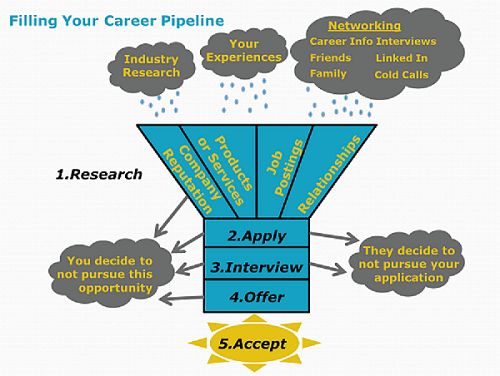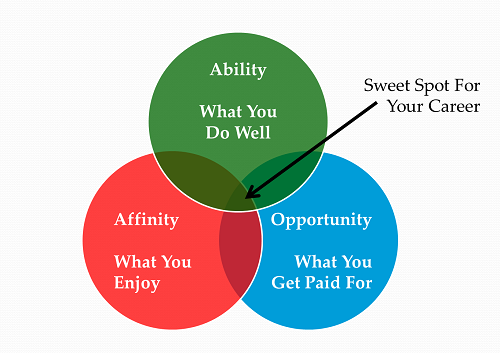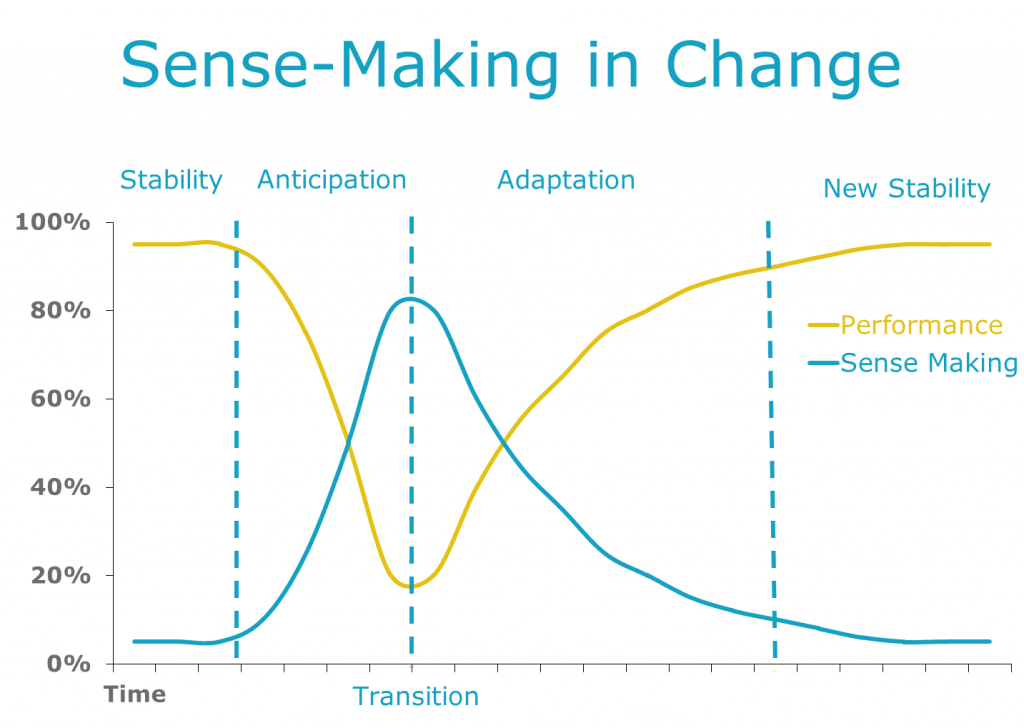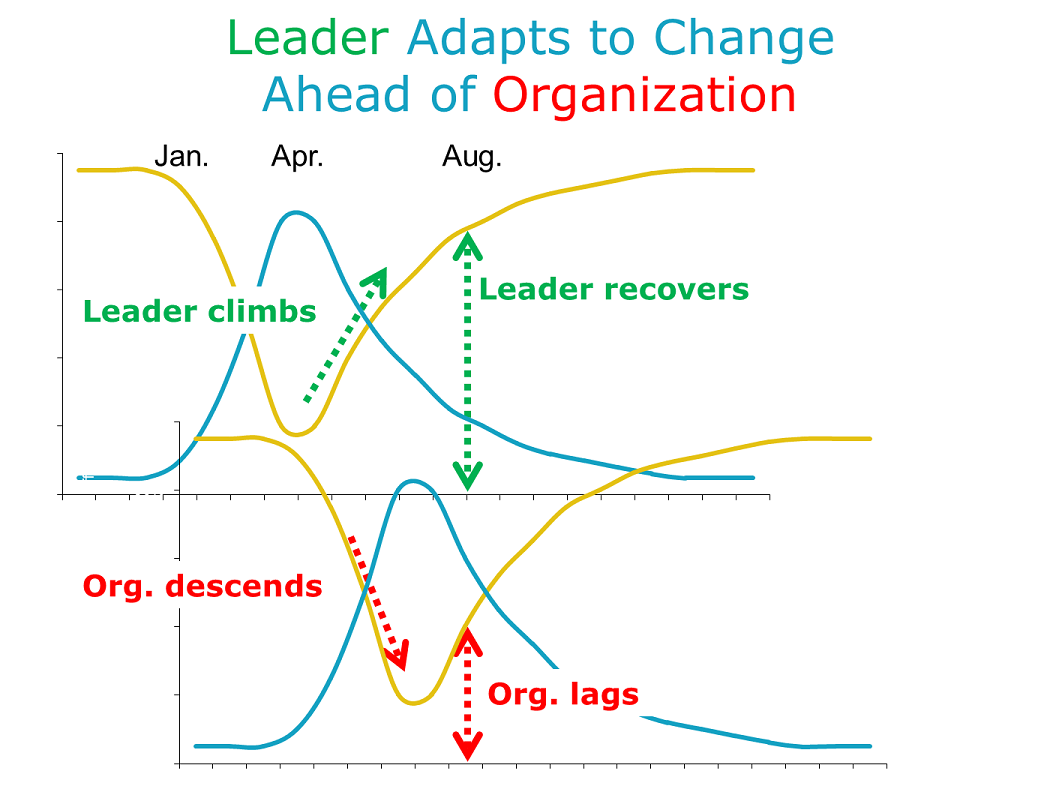When you walk in the room, who shows up for Read more →

What’s Your Best Alternative to Negotiating?
In a failed attempt to lean in, W., an anonymous woman with a Ph.D. in philosophy, asked to negotiate better terms of employment at Nazareth College. Unfortunately, she had her job offer unilaterally rescinded. Many bloggers have commented on why this happened, ranging from gender bias by the college to narcissism and cognitive errors by the candidate.
Here’s another way to look at the situation: The job market is ripe with people who have a Ph.D. in philosophy. Nazareth College probably had a backlog of candidates with similar credentials. Passing over W. was an easy decision. In other words, the college had a BATNA – a “best alternative to a negotiated agreement“.
Negotiating With a BATNA
Negotiation is a dance of offers and counteroffers. With a BATNA, you can choose to sit out the dance. You have acceptable options, so you are not forced to reach a agreement with this employer, job candidate, supplier or customer. You can negotiate from a position of strength.
The employer’s perspective. As a hiring manager at Ford Motor Company, whenever I posted an opening, I would receive a stack of resumes. After the HR department pre-qualified the candidates, I might have 100 resumes left. I would quickly discard most of the resumes, then carefully review 10 or 15 resumes before calling a handful of worthy of candidates. I never negotiated starting salary or benefits. If a candidate asked to negotiate, I would have gone to the next person on my list. My BATNA was a large, diverse and desirable pool of candidates, so there was no reason to negotiate.
The job candidate’s perspective. It is best to interview when you already have a job. Then, your BATNA is to stay where you are. If you don’t have a job, try to generate multiple job offers that overlap. When I decided to move back home to Virginia, I still had a tenured faculty position at my previous college. I interviewed aggressively and received four separate job offers. I always kept one job offer “live” until I received a better offer. I eventually accepted an offer at a prestigious college 30 miles from where I grew up.
Negotiating Without a BATNA
If you really have no BATNA, you have no bargaining power. If you must have that blue 1968 Shelby GT 500 on the auction block, expect to pay top dollar. If there is only one acceptable job candidate, expect to pay top salary. If you are desperate for a job, expect to take whatever they offer.
Here is how to negotiate without a BATNA: Act confident, like you have a BATNA. And the best way to be confident is to find your hidden BATNA.
The employer’s perspective. As a hiring manager at Microsoft, I was looking for someone special – big data expertise, specific programming languages, HR business partner perspective and a willingness to live in the drizzle of Redmond. I opened a hiring requisition, but no acceptable candidates were found. Despite having the requisition open for months, I never even interviewed anyone. I preferred to leave the job unfilled (my hidden BATNA) than to hire someone without the full set of skills I needed. I was confident in my own capacity and the flexibility of my team to succeed, even if we had an empty box on the org chart.
Employers always have the BATNA of leaving a position open. A bad hire leads to poor performance and can create a drag on the rest of your team. You never “have” to hire anyone.
The job candidate’s perspective. As a job candidate, you always have alternatives – hidden BATNAs. I have been known to say “I would rather live in a refrigerator box than do that job.” For graduating students, the alternative to a professional job might be working for minimum wage or going to graduate school.
Whether or not the refrigerator box/Starbucks/grad school is a realistic alternative, confidently acting like you have a BATNA makes you more attractive. I once had a job interview over lunch. While glancing at the menu, the hiring manager started listing his expectations for my work schedule. I told him the schedule was a deal breaker. He insisted that all jobs in our field would have a similar schedule. I confidently disagreed, then selected my entrée. I enjoyed our lunch. Within a month, I interviewed elsewhere (with confidence) and got the job I wanted.
Why did W. go public in her failed negotiations with Nazareth College? In the firestorm after the original post, W. said “I asked for a less then 20% increase in salary [at Nazareth College]. When I negotiated for another tenure track offer in philosophy I asked for a more than 20% increase in salary and was offered it [emphasis mine].” If the other offer was still on the table when she negotiated with Nazareth College, she had a BATNA – as every job candidate and hiring manager should.
Know your BATNA or find a hidden BATNA to give yourself more negotiation power. And, if you truly don’t have a BATNA, smile and say, “Why yes! Thank you!” to your only choice.
What to Expect from Career Coaching
Allen Slade
How can you find your dream job? Professional golfers, Olympic athletes and leaders all use coaches to maximize their performance. To accelerate your career success, consider adding a career coach to your search strategy.
Work takes up half your waking hours. If work is not going well – a toxic boss, a dead-end job, unemployment or underemployment – life tends to follow. In a booming labor market, new jobs are low hanging fruit. But in our current economy, you need a ladder to pick the apples at the top of the tree. You need a career coach.
A career coach is more effective than a teacher or mentor at stretching you to your best self. Your coach assumes you are the expert on your own career. Your coach will help you create a career plan and pursue opportunities effectively. And, a career coach will help you hold yourself accountable for meeting your career goals.
With my clients, we usually start with the ability, affinity and opportunity that make up their dream job.
Balancing ability, affinity and opportunity leads to long-term career success. If you focus on getting the highest paying job by matching your abilities with your opportunities and you ignore what you enjoy, you could end up in a dull job. If your focus on doing what you enjoy and do well, you could end up chasing disappearing opportunities with low pay, such as in the newspaper industry. If you focus only on high paying jobs you would enjoy, but you don’t have the required ability, you will never get a job offer.
A career coach will help you balance ability, affinity and opportunity. Coaches treat you as the expert in your own career, so they won’t direct you down a path you don’t like. They will help you find your own way. Coaches also have the ability to give gentle but powerful feedback on your plans. If you wish to pursue a new field, a good career coach will help you test your plans more gently than Monty Python’s vocational guidance counselor.
When you have identified your career direction, your coach will help fill your career pipeline. Your coach helps you expand your network, generate job leads, polish your resume/LinkedIn profile, target your applications, refine your interviewing skills and make the best decisions on job offers.
 Like any professional service, fees for career coaching can be an issue. The payoff from career coaching is immense. It leads to higher satisfaction, more fulfillment and more pay. If you can afford career coaching, you will find it a worthwhile investment.
Like any professional service, fees for career coaching can be an issue. The payoff from career coaching is immense. It leads to higher satisfaction, more fulfillment and more pay. If you can afford career coaching, you will find it a worthwhile investment.
What if you can’t afford career coaching? If you are a recent college graduate, I recommend using your alma mater’s career center. If you are leaving a company, negotiate for career coaching as part of your outplacement package. You can also check to see what career development services are available from your state or local government.
Whatever you do, don’t settle. Don’t resign yourself to a dead-end job or unemployment. Don’t tolerate a poisonous work situation. Don’t say yes to an unattractive job offer. Pursue your dream job with the dedication of an Olympic hopeful. Fine tune your search skills like a professional golfer on the driving range. And, invest time and money to get the best career coaching you can get.
Making Sense of Change
By Dr. Allen Slade, ACC
Can you perform at your maximum – can you give 100% – in the midst of change? Should you demand 100% from your team when they are facing change? Pushing hard for short term performance can undermine long term success and maximum growth. We need to leave breathing room for change to work its way out. We need to plan for a season of sense-making.
Meryl Louis defines sense-making as the psychological process of revising our cognitive map to figure out “what is new, different and – particularly – what was unanticipated.” Sense-making rewrites a large cognitive map:
- Understanding new duties, responsibilities, power structures, and peer relationships.
- Clarifying the new path to success, including new performance criteria and new goals.
- Developing new skills and behaviors to master the new role.
Here is a picture of sense-making in action:
When you go through a transition, you should expect a decline in performance. You will need to spend energy and time making sense of the new situation. In the midst of change, I ask my clients two questions:
How deep is your valley? The larger the transition, the deeper the expected decline in performance. A reorganization which just moves some boxes on the org chart will have little impact on your performance. A major change of systems, strategy, structure and culture will require more sense-making.
Where are you on the sense-making curve? The highest level of sense-making tends to occur at the point of transition. The hallway conversations linger longest the day the new strategy is announced. The job change is nested in farewell lunches and new employee orientation programs to give breathing space for sense-making.
When you lead others through change, you should plan for your team’s sense-making. This is tough when the change is triggered by competitive pressure. No matter what the performance demands, you can’t just wish away the need for sense-making. During the change, help your team through the valley. Give them perspective, just-in-time information and support to help move them to the other side.
If change is rolled out top-down, the change leader will be further along the curve. You start planning a change in January and announce the change in April. You will be at the peak of sense-making and stress at the April announcement, but your organization is just starting the process. By August, your performance is almost back to pre-change levels, but your organization is just bottoming out.
This lag in sense-making can cause frustration and impatience. As a leader, you can falsely blame your team for not getting with the program. The reality is they need more time because they started the transition after you.
As a leader, plan for the season of change. Know where your people are. “How deep is their valley?” “Where are they on the sense-making curve?” Truly lead, not just in planning the tasks of change but also in making sense of the new future. Provide perspective, just-in-time information and breathing space to help them climb the far side of the sense-making valley.



